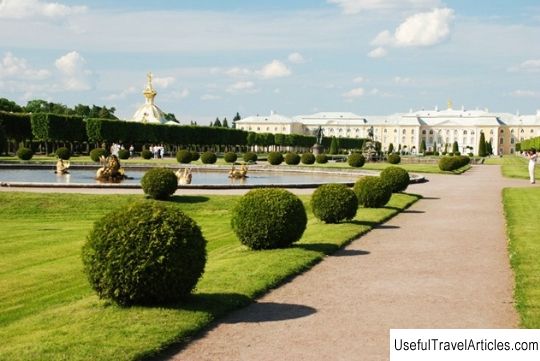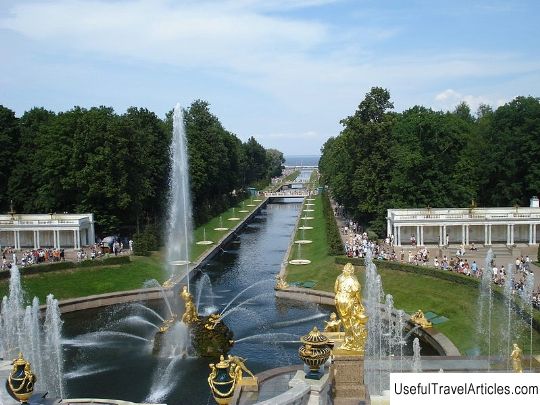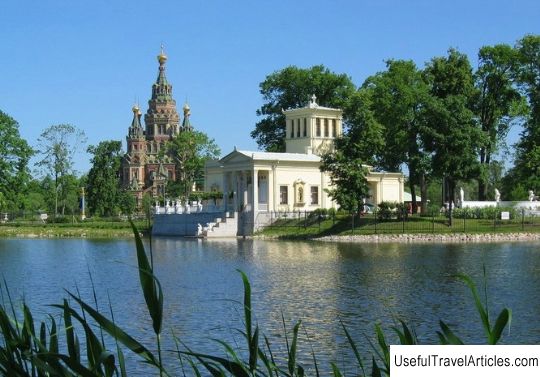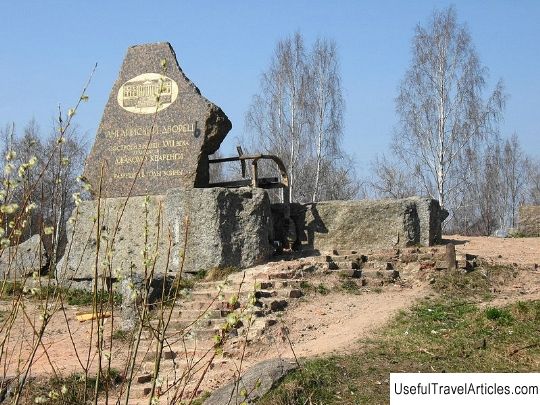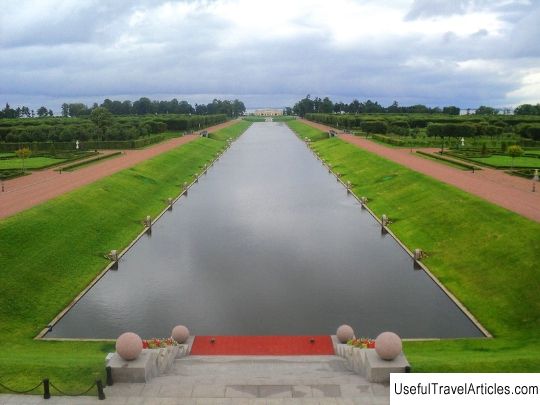Meadow park description and photos - Russia - St. Petersburg: Peterhof
Rating: 9,4/10 (2887 votes) 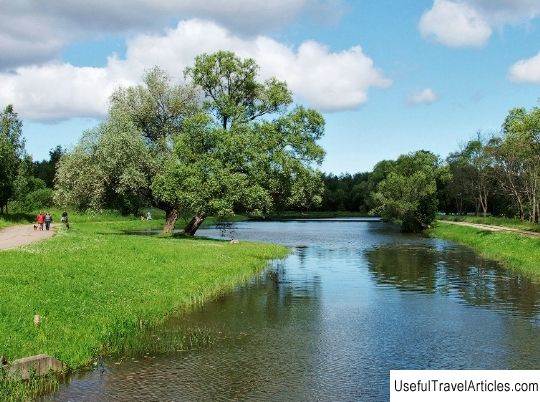
Lugovoy park description and photos - Russia - St. Petersburg: Peterhof. Detailed information about the attraction. Description, photos and a map showing the nearest significant objects. Photo and descriptionLugovoy, or Ozerkovy, park is a landscape park of Peterhof. It is located to the south of the Kolonistsky Park, on the other side of the railway tracks. The area is more than 85 hectares, of which almost 18 hectares are occupied by nine ponds: Nikolsky, Samsonovsky, Ruinny, Eagle, Melnichny, Krugly, Saperny, Tserkovny and Babigonsky. Water from these reservoirs is supplied along the Samsonievsky Canal for the fountains and cascades of the Lower Park and the Upper Garden of Peterhof. The composition of the park combines ponds, fields and separate gardens, laid out around the buildings, connected by walking paths. Meadow Park stretches from north to south up to the Babigon Upland, which is its highest point (80 meters). Consists of four independent parts, represented by the gardens near the Nikolsky house, pavilion "Ozerki", Belvedere pavilion and "Mills". The formation of the park is associated with the construction of the main architectural structures and the creation of ponds and covers the period from 1825 to 1857. All construction work was carried out under the direction of the architect A.I. Shtakenshneider, engineer M.I. Pilsudski and garden masters P.I. Erler and P.G. Arkhipova. The park is dominated by birch, linden, aspen and silvery willow, lilac and acacia bushes. Trees and shrubs are arranged in picturesque groups and, like green curtains, are planted in rows. The park and its buildings were seriously damaged during the war years, nowadays they are gradually being restored. The first building in the park was Nikolsky rural house made of wood. It was built in 1835. For him, Stackenschneider received the title of Academician of Architecture. As conceived by the architect, the pavilion "Ozerki", "Mill", "Belvedere", "Ruin" and the Church of St. Alexandra, many bridges, dams, guardrooms, locks, ponds were also built. The Ozerki Pavilion, or the Pink Pavilion, was built in 1845-1848. It was located at the beginning of the cast-iron Samsonovsky canal, on the bridge between the Krugly pond and the Samsonovsky basin. The pavilion consisted of two one-story volumes, connected by a small gallery, and a high three-story tower, ending with a colonnade of the Tuscan order, which served as the main viewing platform for this part of the park. In front of the southern facade, there was a pergola of 16 monumental herms made of silvery-gray granite, made by A.I. Terebenyov, and a semicircular granite terrace with a lattice, where the fountain pipe gates are installed. The pavilion was badly damaged during the 1941-1945 war. Only a platform with a retaining wall made of gray granite has survived, on which the Nile sculptural ensemble once stood. Belvedere Palace is located in the southernmost area of the park, on Babigon Hill. Built in 1852-1856. The palace was intended for picnics of the imperial family. The building stands on a massive stylobate made of solid granite blocks. A two-flight granite staircase leads to the site of the stylobate from the eastern facade, on the sides of which 6 marble sculptures were previously installed. This is the central entrance, accentuated by a portico with four granite figures made by A.I. Terebenyov. On the west side there is also an entrance to the palace with a small granite porch and four red granite pedestals. The first floor of the Belvedere is a podium, cut through by high windows. Its facade is decorated in the form of alternating wide and narrow rusts; the corners are highlighted by pilasters with terracotta Corinthian capitals. The first floor housed the Great Hall, distinguished by its special splendor, and the offices of the Empress and Emperor. The second floor is made like an antique peripter, for which the first floor serves as a foot. 28 granite columns with white marble bases and Ionic capitals carry an intricate profiled entablature with marble architrave. There are openwork cast-iron gratings between the columns. The floors of the colonnade and porch are lined with mosaics. Pergolas and a garden in front of the palace were arranged by the gardener P. Erler immediately after the construction of the palace. After the October events, a rest house was arranged in the palace. During the war, the Belvedere was badly damaged. In 1953-1956, restoration repairs were carried out here and the rest house was reopened. Currently, it houses a hotel complex.                 We also recommend reading Red Tower (Punane Torn) description and photos - Estonia: Parnu Topic: Meadow park description and photos - Russia - St. Petersburg: Peterhof. |
